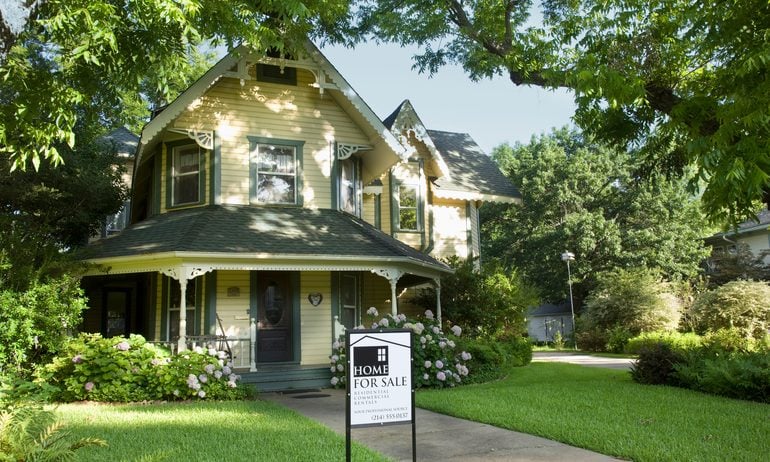Weekly Mortgage Rates Barely Budge, With No Signs of Falling
A combination of high interest rates and record-high home prices are pricing buyers out of the market, just when yearly sales should be at their peak.

Some or all of the mortgage lenders featured on our site are advertising partners of NerdWallet, but this does not influence our evaluations, lender star ratings or the order in which lenders are listed on the page. Our opinions are our own. Here is a list of our partners.
Weekly mortgage rates continued to simmer last week, as markets wait in suspense ahead of the White House’s August 1 tariff deadline. The average 30-year fixed-rate mortgage rose one basis point to 6.85% the week ending July 24, according to rates provided to NerdWallet by Zillow. A basis point is one one-hundredth of a percentage point.
Rates are basically exactly where they were at the end of June — and there’s not much hope they’ll be significantly different by August.
Existing home sales hit lowest pace in nine months
Stubbornly high mortgage rates continue to price buyers out of the market: Data from the National Association of Realtors (NAR) shows that existing home sales fell 2.7% in June. The annual pace of existing home sales dipped to 3.93 million last month — the lowest pace since September 2024.
Meanwhile, the national median sales price for existing homes hit $435,300 in June, up 2% (or $8,400) from one year ago. This marks exactly two years of consecutive price growth.
Holding out for 6%
June is usually peak homebuying season as families with school-age children look to take advantage of the summer break. But with both listing prices and mortgage rates remaining high, more would-be shoppers are staying put.
"High mortgage rates are causing home sales to remain stuck at cyclical lows,” said Lawrence Yun, NAR chief economist. “If the average mortgage rates were to decline to 6%, our scenario analysis suggests an additional 160,000 renters becoming first-time homeowners and elevated sales activity from existing homeowners."
Moving into the back half of summer, that 6% rate feels more like a distant dream. One major factor in mortgage rate moves is the direction of the federal funds rate, which the Federal Reserve is set to reevaluate next week. With trade deals remaining unsettled and inflation trending upward, analysts are predicting the Fed will vote to hold rates steady — meaning it’s unlikely that mortgage rates will see a meaningful drop.
Lack of housing inventory is hurting sales
“Multiple years of undersupply are driving the record high home price,” said Yun.
New data from Wells Fargo economists and the U.S. Department of Commerce shows this problem isn’t likely to go away soon. Single-family housing construction starts fell 4.6% in June, in a second consecutive month of declines.
Over the course of the year, the number of single-family housing units currently under construction fell by 6%. Meanwhile, multifamily housing construction starts increased 4.6% in June. While it hasn’t fully recovered from a 9.7% drop in May, this growth is attributed to increasing demand for rentals as fewer tenants can afford to buy.
Making the most of a high rate environment
If you’re part of the group hoping rates will fall closer to 6% and boost your buying power, you may have to wait until fall or winter. Most analysts predict that the Fed won’t be in rate cutting mode until at least September — and potentially later. Of course, a lot can change between now and then. But for hopeful buyers, there can be advantages to having a few months of lead time.
For starters, you have some time to get your financial profile in shape by focusing on paying down your existing debts and building your credit score. This can help you get a better interest rate and qualify with more lenders as you shop around.
With your credit in order, you can apply for preapproval with multiple lenders if rates start to fall. Most preapproval letters are good for up to 90 days, and they show sellers you’re a serious buyer who can afford the home.




